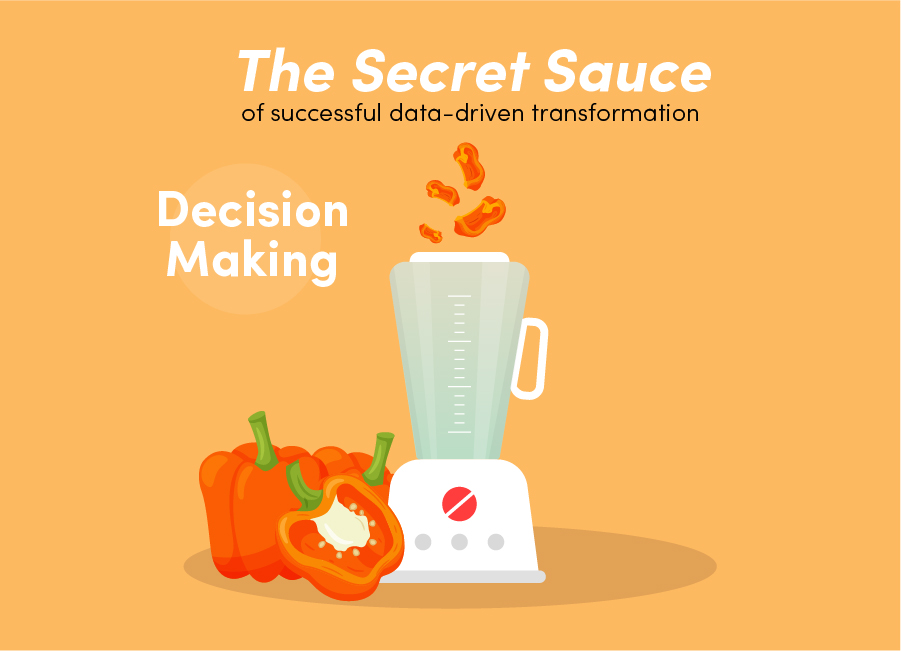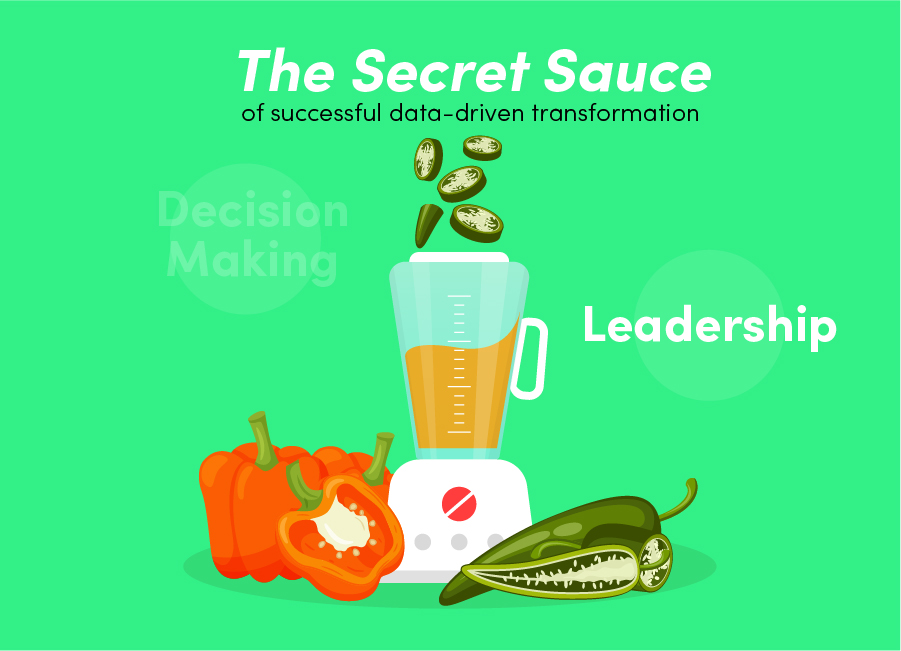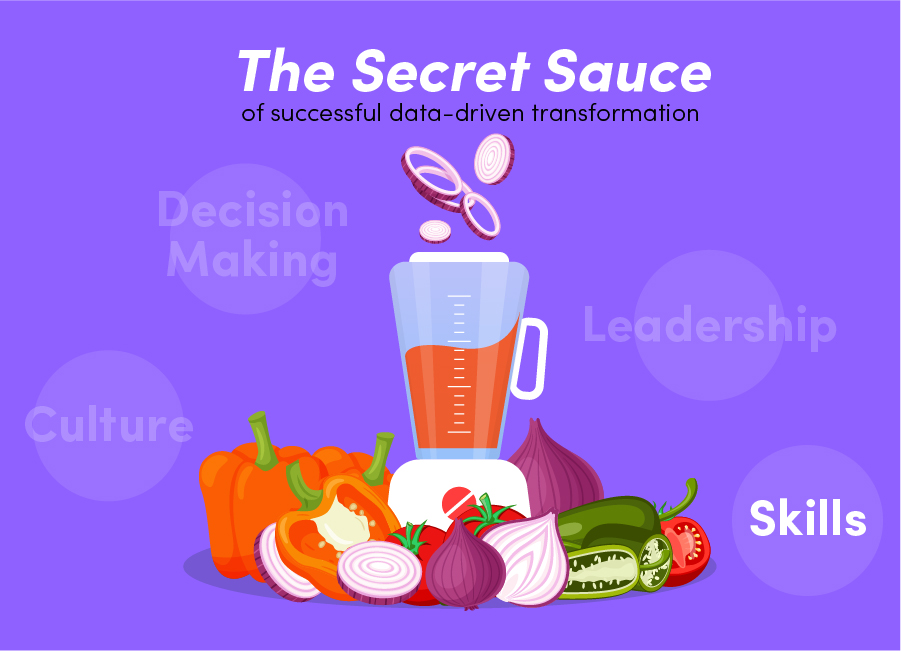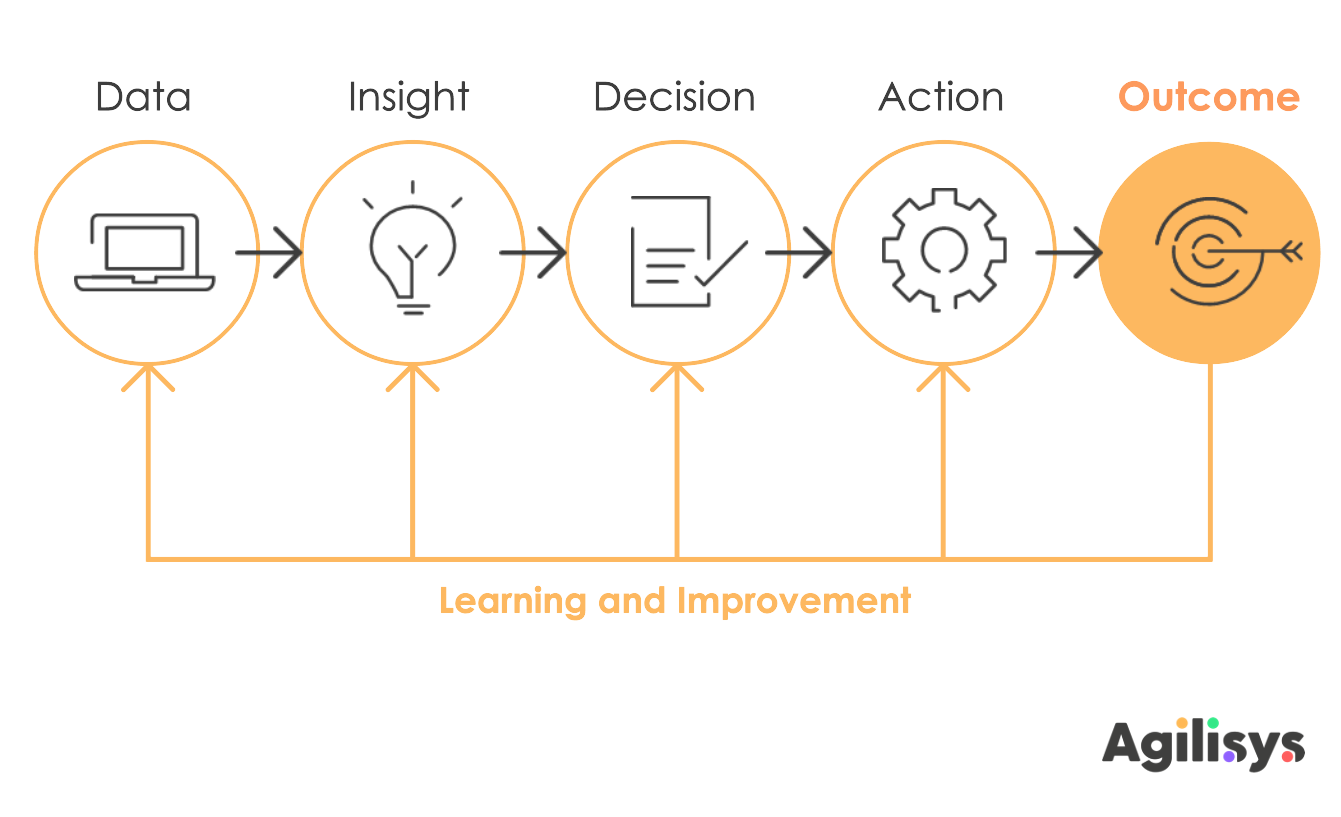
The key ingredients of successful data-driven transformation
Extracting the greatest possible value out of data – and delivering data-led transformation – is undoubtedly a common goal for public sector organisations everywhere. Yet, despite rapid advances in data usage, the ability to make better decisions for better outcomes remains tricky to master. As surprising as this may sound coming from a technology company, […]
Extracting the greatest possible value out of data – and delivering data-led transformation – is undoubtedly a common goal for public sector organisations everywhere. Yet, despite rapid advances in data usage, the ability to make better decisions for better outcomes remains tricky to master.
As surprising as this may sound coming from a technology company, the solution to the problem most definitely does not start with technology. Instead, it requires a secret sauce, expertly blended to meet the distinct requirements of each organisation and the outcomes they want to achieve. Combine skills, leadership, culture and the ability to prioritise decision-making and you have the recipe for a powerful new world of data-led decision making, one that binds data to the impactful outcomes that the public sector strives for and, ultimately, allows people to tell the story about what they’ve been able to achieve with data.
In this article we explore the critical ingredients of this secret sauce in more detail and discuss what each of the elements mean for successful data-driven transformation.
Secret Sauce: an element, strategy, procedure, etc. that accounts for or increases the chances of success.
Making the secret sauce

1. Decision Making → Leadership → Culture → Skills

What fundamentally determines the value you’re able to extract from your data is the quality of decisions that you’re making.
Good decision-making is key to companies and institutions running efficiently and overcoming unforeseeable obstacles. With the help of data, decisions makers are now able to make better-informed choices than in the past. Effective use of data also provides the ability to formulate predictions of the future and, crucially for the public sector, drive value and enable right to left thinking that starts with outcomes and works backwards.
Watch as Ben Scully, Senior Consultant for Data and Insights at Agilisys, explains why good decision-making is key to data-driven transformation.
- 90% of digital data has been created in the last two years, but only 1% analysed
- Local Government predictive analytics is most frequently applied in children’s social services, but less than 35% of council data scientists are using it
2. Decision Making → Leadership → Culture → Skills

The reason that we always include leadership as a kay ingredient is that it’s the responsibility of leaders not just to talk a good talk about data, but to really champion what’s achievable by making better use of data, and then being able to confidently articulate the benefits.
In particular, the role of leadership – someone willing to provide the mandate for system change – is crucially important in making this stick. Leaders need to be visibly involved. The ability to talk passionately and compellingly, and then stand behind the project, is absolutely fundamental, along with having the necessary skills.
One of the key challenges for leaders is how do you position the request for investment in data against something like the request for investment in extra clinicians or social care workers or frontline police? It’s a challenging argument to make.
In our experience, where we’ve seen data transformation programmes really thrive, is where leadership is able to do that, often by joining business outcomes to the data and making the very compelling argument that without using your data, you’re really going to struggle to address some of the more complex challenges and issues.
Unless you have the information and insights to make those better decisions, and be prepared to learn from them organisations will struggle to strike the correct balance around continuous improvement. Having an empowered leader, one that is also skilled enough to create the case for data, is one of the top three critical data success factors.
3. Decision Making → Leadership → Culture → Skills

Culture is a particularly important for successful data-drive transformation because it’s the ingredient that drives change.
In all too many cases, decision-making remains rooted in the past. That’s understandable given we’ve relied on gut feel, intuition, experience or anecdotal evidence when making decisions. This clearly needs to change if organisations are to unlock the value of data – and culture is front and centre of this necessary shift.
Until now, data hasn’t been particularly trusted, because we’ve not been collecting or connecting it in the right way. And we’ve certainly not been focusing on the decisions that we need to make. As a result, people will fall back on the tried and trusted methods that we’ve used in the past. But really, we just need to understand how we can give people more confidence to change their mindset to use judgement as well. But how do you do that?
Ben Scully: “For me, what’s most effective is actually putting the tools and the insight in people’s hands, and feeding their natural curiosity whether it’s a dashboard or something like a machine learning algorithm that starts to support decision making and guide you to where you think you should be.
“Seeing people’s eyes light up at the opportunities and seeing how they can change the way that they’re thinking and making these decisions is really exciting. Once you’ve got that small nugget of excitement, you can start to build out into a community where you’ve got people within teams or across the same organisation reporting, delivering analytics, or even at the frontline working together more effectively to share their learnings. Take it one step further and you’ll end up with colleagues sharing how they’re applying these new flexible tool sets and methodologies to what they’re doing.
“Most importantly, as we’ve already said, this all has to be driven by strong sponsorship from the leaders who are really in charge and embedding this new culture of data-led working”
- 74% of employees feel overwhelmed or unhappy when working with data
- 75% of public sector works do not know what data is available outside their department to help develop new approaches to service delivery
4. Decision Making → Leadership → Culture → Skills

Skills is probably the area that comes up most frequently when we talk to organisations about the barriers to becoming more data driven. This issue tends to manifest itself in two key areas:
1. Supply and demand: how can we think differently about our value proposition to candidates, given the public sector almost certainly can’t compete on salary?
2. Wider data literacy: it’s all very well having a cadre of data scientists and engineers who can brilliantly model and work with data and drive all sorts of insight, but have you got people with the innate curiosity to ask what it all means and why?
Listen to Rich Walker as he discusses how skills can be a barrier to data-driven transformation.
- 68.3% of data and analytics projects are delayed because of the data and digital skills gap

The secret is in the blend
On their own, the ingredients of what we’re calling out secret sauce may not be anything new – or particularly difficult to bring together. However, the truth is that this is a difficult sauce to perfect – the secret sauce is in the blend of ingredients because there’s no one-size-fits-all recipe here.
We are regularly working with clients to figure out the correct blend of ingredients tailored to their requirements, their taste. Fundamentally, it requires you to join up the different parts of your organisation, get everyone onto the same page and all moving in the same direction. That has been difficult in the past when providing services in the same way that they’ve been probably not seen before. People won’t necessarily have the skills, so training may be required, and you need to have leaders that don’t necessarily understand it, to sponsor it, delegate it, and drive it through.
That’s why, to make data-led transformation a reality, you need objective support. How much of each ingredient does your organisation actually need? What’s going to drive the ROI for you? That’s why the sauce remains secret.
The impact multiplier
When we think about the secret sauce, we’re really talking about how the components of the secret sauce and the impact they have on the data value chain. If you start with data and insight, there is a real risk that you’re not necessarily aligning investment in your activity. The secret sauce has the greatest impact when we start with the intended outcomes and work backwards. You avoid waste and you target your efforts in the most meaningful way.
You also have strategic alignment from the outset . You’ve got the first chapter of your business case written, because you’ve already done the thinking to make sure that whatever you’re going to do from a data insights perspective is in some way tied to the decisions that affect those outcomes. There’s a clear need to turn the various dishes that form the value chain into a well-balanced multi-course meal where are the courses complement each other. However, as we’ve discussed, there are some key ingredients that organisations miss, which is why we call it the secret sauce.

For me, the real power and impact of the secret sauce is that each ingredient is an impact multiplier that contributes to the better outcomes that we’re working towards.
Jut as the volume of data at our fingertips grows exponentially, so too does the ability to utilise data and continuous improvement offered by a well-oiled data value chain. As each person within an organisation gets more confident with each part of the value chain, the potential to deliver positive outcomes to millions of citizens grows. That’s the value of the secret sauce.



